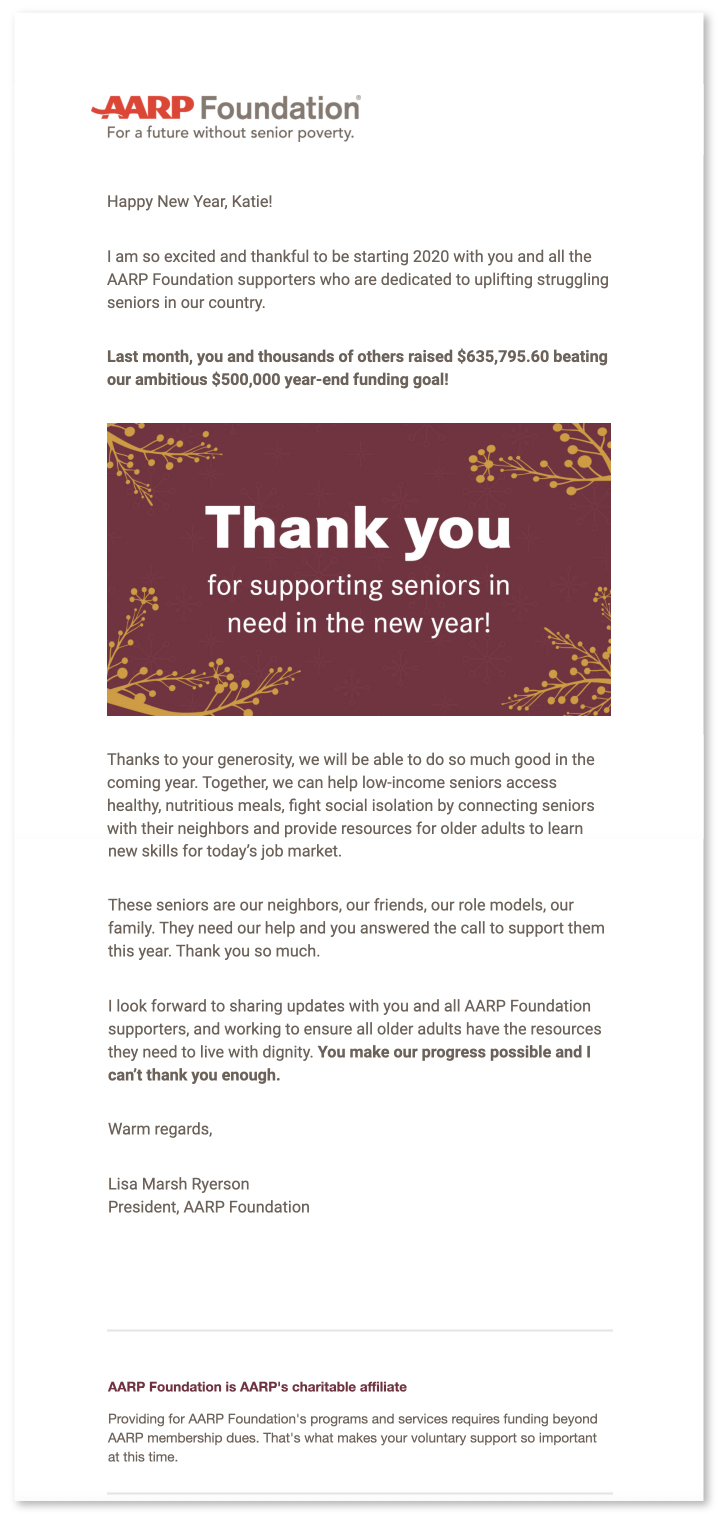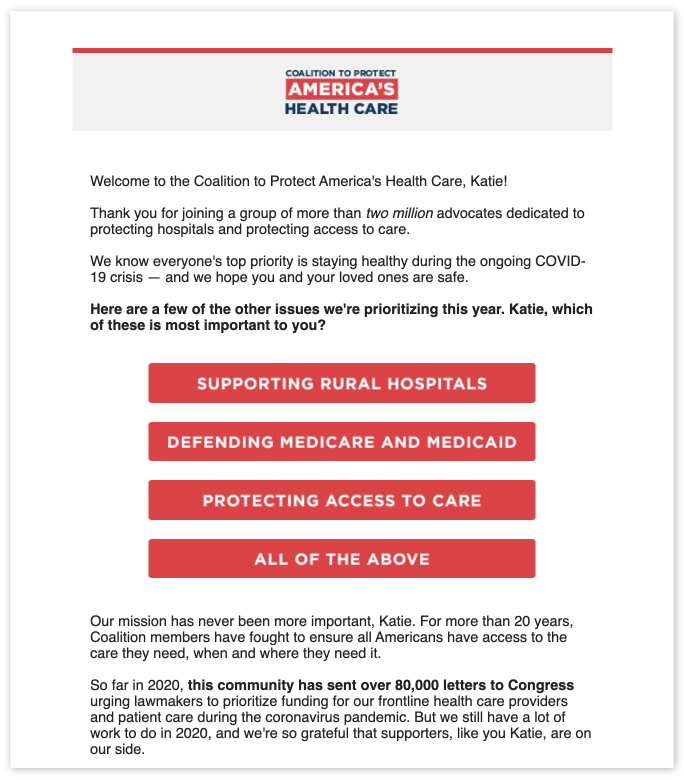We get it. 2020 has been…a lot. And as the days tick down to December 31st, nonprofit fundraisers are understandably ready to tie a bow on year-end giving and start fresh.
We’re here to (unfortunately) remind you that the end of 2020 doesn’t mean you can stop engaging with your generous donors. January is an important time to connect with your audience and set the stage for the year to come.
So, take a breath. Drink some eggnog. And read our tips on what to send after the ball drops:
The “thank you”
This should be the very first message you send in January. Your relationship with your donors doesn’t end with the December 31st tax deadline. Start the new year with a cultivation message that features:
- Personalized content: Thank your year-end donors for donating to your campaign. Thank the rest of your community for being with you and sharing your mission during a challenging year and holiday season. You can also send these messages via Hustle’s peer-to-peer text messaging platform. It’s a great way to reach donors in a way they might not expect!
- A report back: Continuing to share content personalized by donor status, report back on your end-of-year success, being specific when appropriate (e.g., “Thanks to your gift, and the generosity of XXX supporters like you, we raised over $XXX to strengthen our programs in 2021.”). We like transforming this data (or any stellar numbers from an annual impact report!) into social content too – your donors will be proud of their support and want to share it.
- Priming language: Set the stage for what your audience can expect in their inbox for 2021. The “Thank You” message is a prime opportunity to include a few sentences on what to expect from your organization in the months ahead – and remind your community how their support makes these efforts possible.

The stage-setting
Your strategy for the year is set. You’ve outlined top focus areas internally. But, which will resonate most with your audience? Ask them!
The stage-setting email centers around your mission, highlights key areas of work, and asks your audience which of those areas is their top priority. This email can help inform your communications in the new year and provides updated insights about your audience. We like using a low barrier, one-click survey tactic to maximize engagement and responses, like the example below. (This has a secondary benefit of helping with your email deliverability, which often takes a hit during end-of-year fundraising.) You can also ask your audience what resonates with them via Twitter poll or Instagram survey. Switch it up and make sure you’re meeting your audience where they are!

The sustainer push
For many organizations, supporters are most likely to convert to sustainers after already giving. Complement and capitalize on your year-end efforts by adding a sustainer conversion campaign to your January calendar. This campaign should drive home the value proposition of your sustainer program. You should include:
- Resolution language: It’s the one time of year people make resolutions, after all. Ask your audience to resolve to do good and support your mission in the coming year.
- Personalized content for year-end donors: Remind them of their recent generosity, thank them for it, and then ask them to take the next step with a monthly contribution. We suggest defaulting to a monthly ask on your main donation page to really drive the message home.
- Benefit of monthly gifts: In a survey for one of our clients, sustainers mentioned two budget-focused reasons for their recurring contributions. The first reason was monthly giving is more convenient and fits easier into their personal monthly budgets, compared to one-time, larger gifts. The second reason concerned organizational budgeting and that it mattered to sustainers that our client had predictable donations to rely on for program planning. Make this known to your audience – if they’re aware that a monthly gift will help you plan ahead, they may be more willing to make the jump.
The welcome series refresh
Is your welcome series collecting a little dust? It happens – and that’s why January can be a good time to dig into your user’s onboarding experience. You may decide to make large creative updates based on new areas of work, like the ongoing pandemic or a changing audience composition. You may decide to make smaller updates, like adding an envelope test or tweaking content for relevancy. Or, you may just want to re-read your series with a fresh set of eyes. There’s no right answer – just be sure to take a look!
There’s certainly no one-size-fits-all approach when it comes to January messaging. But when you personalize messaging, keep your audience in the loop, and go the extra mile to make your donors feel appreciated, it’ll make all the difference.
Want to chat January communications? Or February? Or March? Reach out.